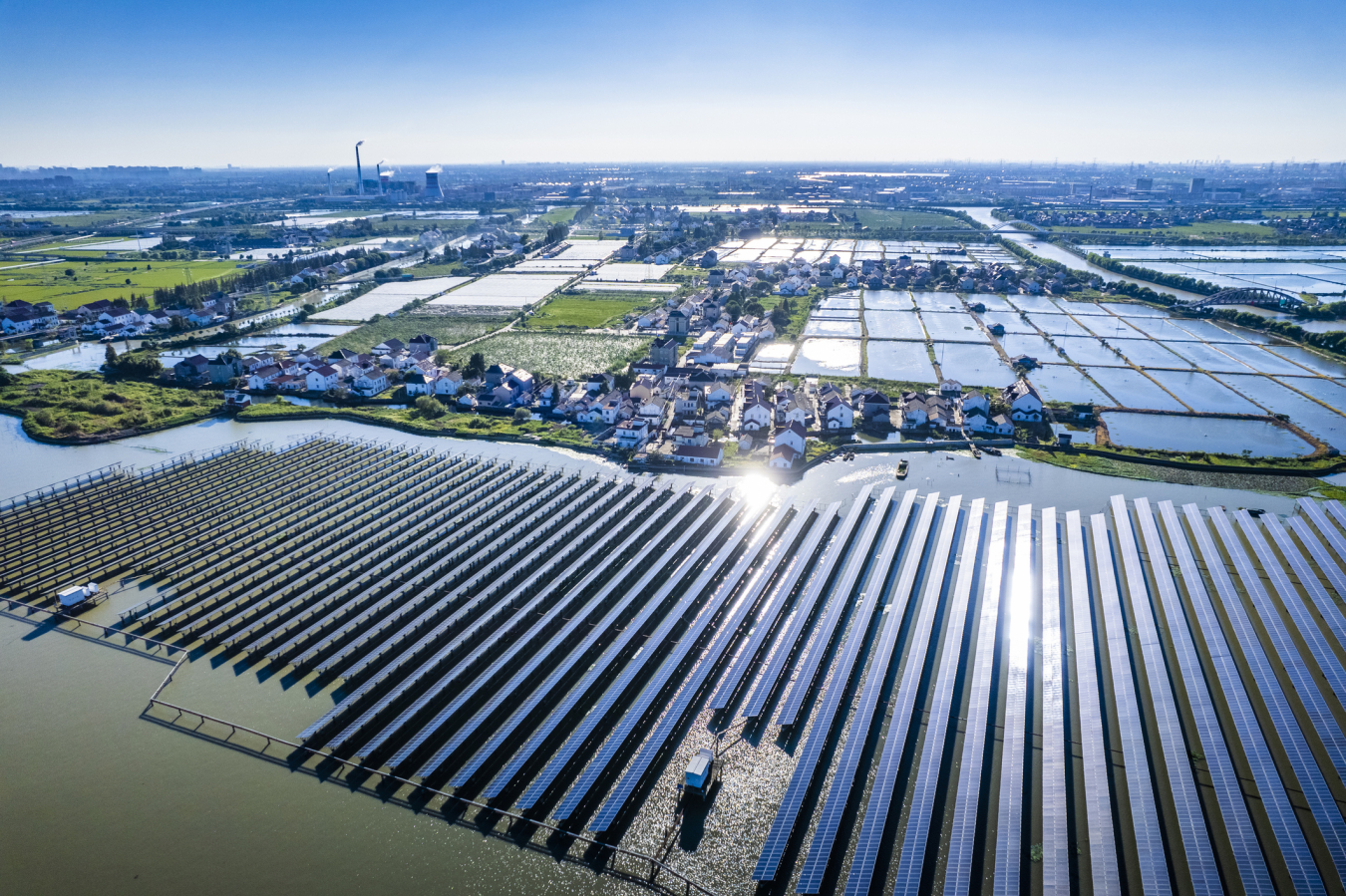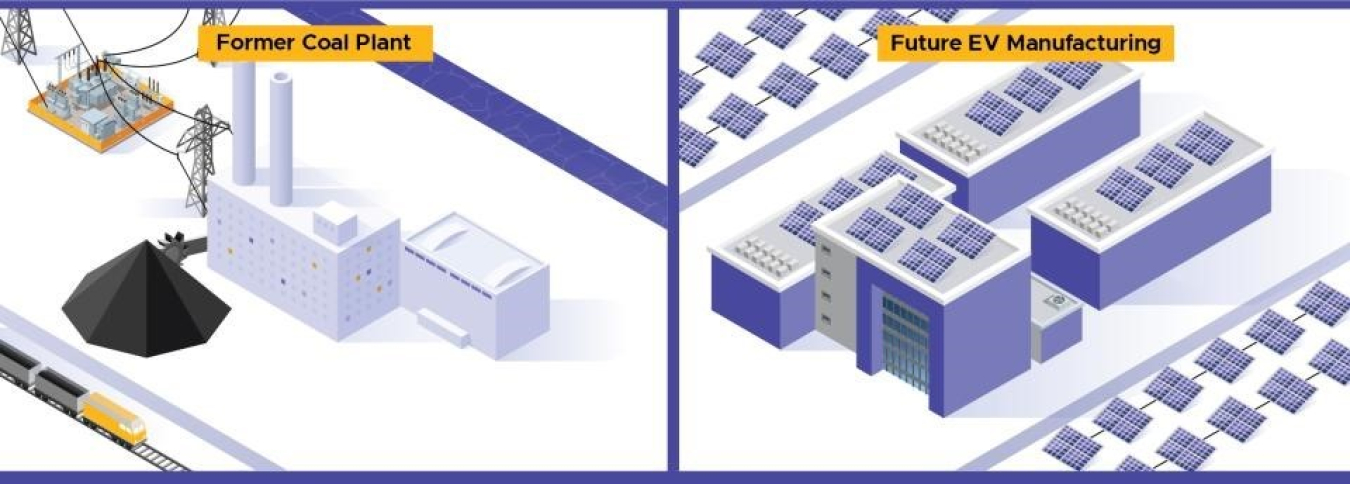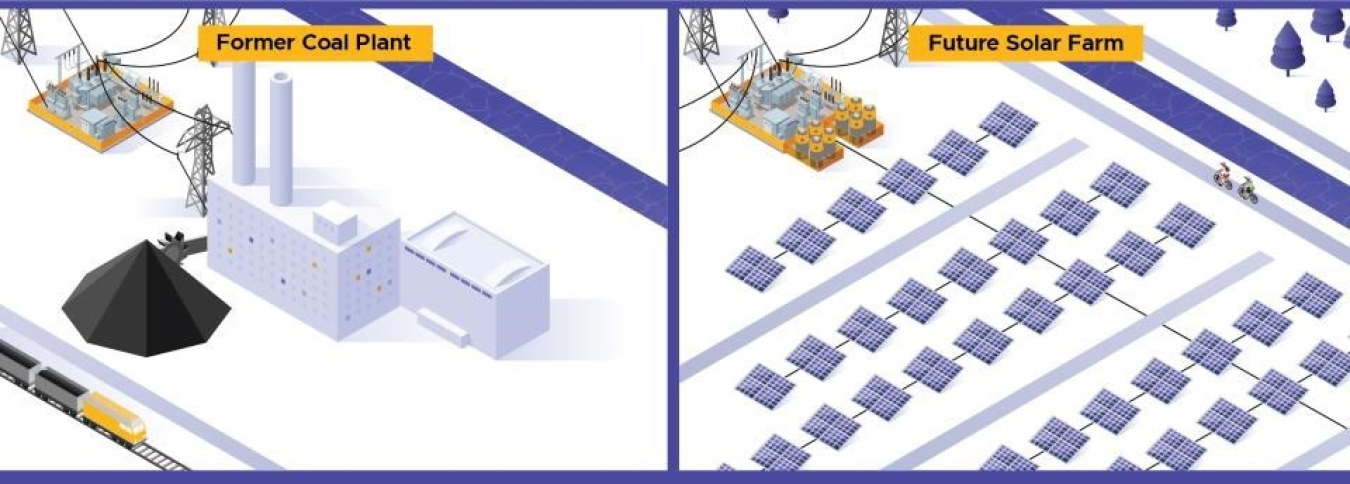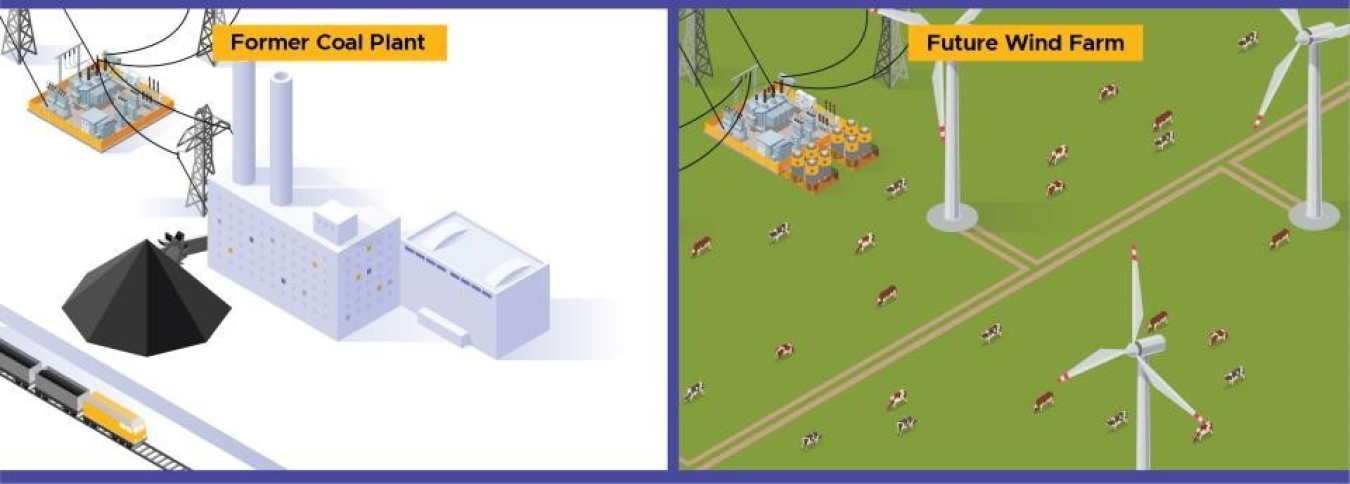How Energy Communities Can Leverage New Energy Projects to Secure Economic Opportunity and Jobs
January 14, 2025Communities across the nation are exploring new and innovative ways to utilize emerging energy technologies to repurpose retired coal power plants. These projects provide a pathway to a sustainable, economically viable future for energy communities, preserve jobs and provide clean energy to meet America’s increasing energy demands.
Energy communities, for example those who house a former coal plant, have unprecedented federal support opportunities through the Bipartisan Infrastructure Law (BIL), CHIPS and Science Act, and Inflation Reduction Act (IRA) unleashed. These include:
- Funding for foundational infrastructure investments, such as electric transmission, broadband, and building retrofits
- Tax credits for
- $250 billion in loan guarantees through the Energy Infrastructure Reinvestment (EIR) program to repurpose legacy energy assets and leverage our extensive energy infrastructure and skilled workforce to support the energy transition. These resources can catalyze capital investment in these former coal plant sites.
Resources for Reinvestment
DOE’s Office of Policy worked with the Pacific Northwest National Laboratory (PNNL) to provide an overview of how DOE loans, Brownfields Grants, IRA tax credits, and other targeted programs can be used to reinvest in legacy assets. The Federal Support Opportunities to Remediate and Redevelop Energy Assets report, published in May 2023, outlined the various financial incentives and options, as well as reinvestment models to jumpstart ideas and conversations around repurposing energy assets with clean energy generation and other uses. As outlined in that report, financial resources are abundant, but requirements vary according to the reinvestment options chosen for location at a former coal power plant site.
To help make sense of the options, DOE and PNNL developed several easy-to-read coal-to-X fact sheets that developers, community members, local government officials, and other stakeholders can use to examine and compare feasible asset reinvestment options. These fact sheets can help initiate conversations around which options are the best match for a given site and community.
Many retired and retiring coal power plants have attributes that are valuable for reinvestment, such as access to multiple forms of transportation and a point of interconnection to the electricity grid. These reinvestment options—wind plus storage, solar plus storage, nuclear power, data centers, and energy-related industrial uses (like electric vehicle manufacturing)—comes with its own considerations for integrating with a site’s attributes.
Coal to Wind
For wind energy, the primary consideration is the quality of the available wind resource, followed by the size of the land available. Wind farms generally require ample space, so sites with large parcels or adjacent land that could be leased for wind development would be ideal.
Coal to Solar
Solar energy development requires sites with favorable, sunny potential, but is less site-sensitive than wind energy. Solar energy is already in the process of being developed at several retired and retiring coal power plants across the country, such as the retired Coffeen power station that is anticipated to be redeveloped with a 44 MW solar photovoltaic farm in Illinois.
Coal to Nuclear:
Nuclear energy also requires large sites, but with low surrounding population density. This redevelopment option could provide numerous jobs and valuable dispatchable power. Based on a study of a coal plant site in the southwestern U.S., a coal-to-nuclear redevelopment could have a net positive effect on employment in the plant’s community, and the existing workforce is largely transferable, with workers being aligned in skillsets.
Coal to EV Manufacturing
The most important site attribute for energy-related industrial uses, such as EV manufacturing, is access to power and a robust transportation infrastructure. A site may also be able to host multiple uses. For instance, an EV battery manufacturer might install solar panels on its factory roof or purchase energy from an onsite solar and storage facility. Related manufacturing facilities could also be co-located in commercial and industrial clusters.
DOE’s visualization tool provides more information about current and former coal plant sites, including existing infrastructure and access to nearby transportation.
You can find all Coal-to-x Factsheets here.
Also, find more information on how your community can get started here- 10 Steps to Community Reinvestments.






